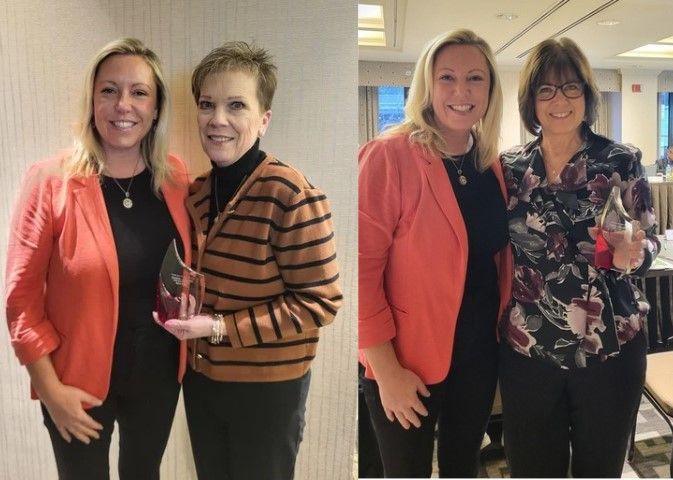Using a New Documentary to Highlight the Why and How of Inclusive Employment

Clarence Goodwin, Jesse Teverbaugh
Greg Jacobs, Co-Director, The Road Up
As documentary filmmakers, we feel a responsibility to conceive of our movies as vehicles for positive change. That’s why we’re so excited by the ways our latest film, The Road Up, has been used to call attention to pressing workforce development issues.
The Road Up follows four participants in Cara– a Chicago-based job-training program– as they search for stable employment and a pathway out of poverty. They are guided, goaded, and challenged by their impassioned mentor, Mr. Jesse, whose own past compels him to help others find hope amid addiction, homelessness, and the aftereffects of incarceration. Their stories demonstrate the daunting and often interconnected obstacles that prevent so many from getting— and keeping— a job. Taken together, they start to reveal the breadth of struggles millions of Americans face every day.
Working closely with Cara, we recently launched a national impact campaign designed to create space for challenging conversations around the issues raised by the film—in particular, second chance hiring, racial equity, and inclusive employment. Through screening events with companies like Google, JPMorgan Chase, and Aon and organizations like the Manufacturing Institute and The Conference Board, The Road Up has been used to galvanize support for changes in corporate hiring practices. By taking audiences on an emotional journey into the lives of its subjects, the film seems to soften attitudes around what can sometimes be tripwire topics, laying the groundwork for more empathetic and productive conversations.
The film communicates the “why” of inclusive employment persuasively and powerfully, but most post-screening discussions end up boiling down to some variation of the same fundamental question: “Okay, but how?” The scale of the challenges seems so daunting, especially with millions of Americans locked out of the workforce due to a variety of barriers. For example, in 2019, SHRM found that 92% of organizations run background checks on prospective candidates, and yet 1 in 3 adults have a criminal record, the majority of whom are Black and Latinx. Similarly, when employers require a four-year degree, they exclude an even broader talent pool, including 68% of Black and 79% of Latinx candidates. Many firms continue to use background policies or educational requirements as proxies for trustworthiness or ability, a practice which isn’t borne out by data. As a result, they exclude huge numbers of highly committed and capable individuals, at significant cost to everyone’s bottom lines.
To audiences looking for sets of concrete policies, the answers may not be intuitive. That’s where our ongoing collaboration with Cara has proven so effective. Through the work of their inclusion action team headed by Managing Director Sara Wasserteil, they’ve provided audiences with a robust blueprint for creating a more inclusive workforce through recruitment, hiring, and retention policies. Here are some of the practical, achievable steps they recommend companies take across the employee lifecycle to find overlooked talent:
1. Recruitment. In the search for talent, it can be common for employers to rely on traditional recruitment methods like their networks, local colleges and universities, trade schools, and online sources like LinkedIn. To broaden their recruitment efforts to include individuals who may not have access to traditional channels, employers can:
- Reassess the educational requirements for each job role (i.e., does a janitor require a high school diploma to do the job effectively?)
- Radically reduce criminal background testing and focus more on discrete offenses rather than backgrounds as a whole; shorten the lookback period to less than seven years
- Test job descriptions with workforce development organizations to ensure that the language isn’t inadvertently or unnecessarily exclusionary, or use tools like Skillful's job posting generator
- Hire from workforce development organizations that have a strong track record of helping talent find and keep employment
- Make job applications mobile-friendly for people who may have limited access to computers
- Provide job-shadowing experiences and internships, like the Chicago Apprentice Network
2. Hiring. Once potential candidates have been identified, another common barrier is hiring practices that exclude certain populations. To widen the net of who may advance in the candidate selection process and ultimately obtain a role, employers can:
- Use a competency (or skills) based hiring approach to capture those who may have gained experience outside of the workplace
- Ensure that hiring processes eliminate opportunities for implicit bias (e.g., setting up structured systems that assess people on job-related competencies versus personal opinions)
- Understand the best way to communicate with candidates so that people with less internet access do not miss any important messages
3. Job Quality and Support. Once firms find and employ talented people, retention is key. When firms fall short on organizational support, pay and benefits, and management responsiveness to workers’ concerns–– all essential factors in stability and quality of life– they will commonly experience far greater rates of attrition. To help employees stick and stay, employers can:
- Create a structured onboarding process that goes beyond administration to include on-the-job training and 30-60-90 day check-ins to understand what the employee needs to be successful
- Empower managers to support their teams beyond just production; showing care from the top down can set this example
- Partner with non-profits that can support individuals in areas that could impact their stability (e.g., transportation, childcare, housing, etc.)
- Provide living wages, predictable scheduling, and benefits; support workers in having a voice in the workplace
4. Advancement. Studies estimate that every time an employee leaves a job, it costs 33% of that employee’s wages to find, hire, and train up a replacement. So for employers, maximizing job retention can be a key to minimizing costs. To help retain employees—and create advancement opportunities—employers can:
- Develop specific advancement opportunities and career pathways for every role in the company, and ensure that employees know how they can tap into these opportunities
- Provide a coach or mentor who can support the employee in pursuing their goals
- Help employees learn skills or earn degrees that will enable them to advance in the firm
- Provide professional development opportunities, so that if an employee can’t advance within the firm, they can advance elsewhere
- Transition employees to their next opportunity with cooperation, dignity, and respect
Greg Jacobs is an Emmy-winning filmmaker and the co-director, with Jon Siskel, of The Road Up. To bring the film to your company, organization, or community, contact Greg at info@siskeljacobs.com. To learn more about Cara’s workforce solutions, contact Sara Wasserteil at swasserteil@caracollective.org.


National Association of Workforce Boards | All Rights Reserved |
Created by Olive + Ash.
Managed by Olive Street Design.





